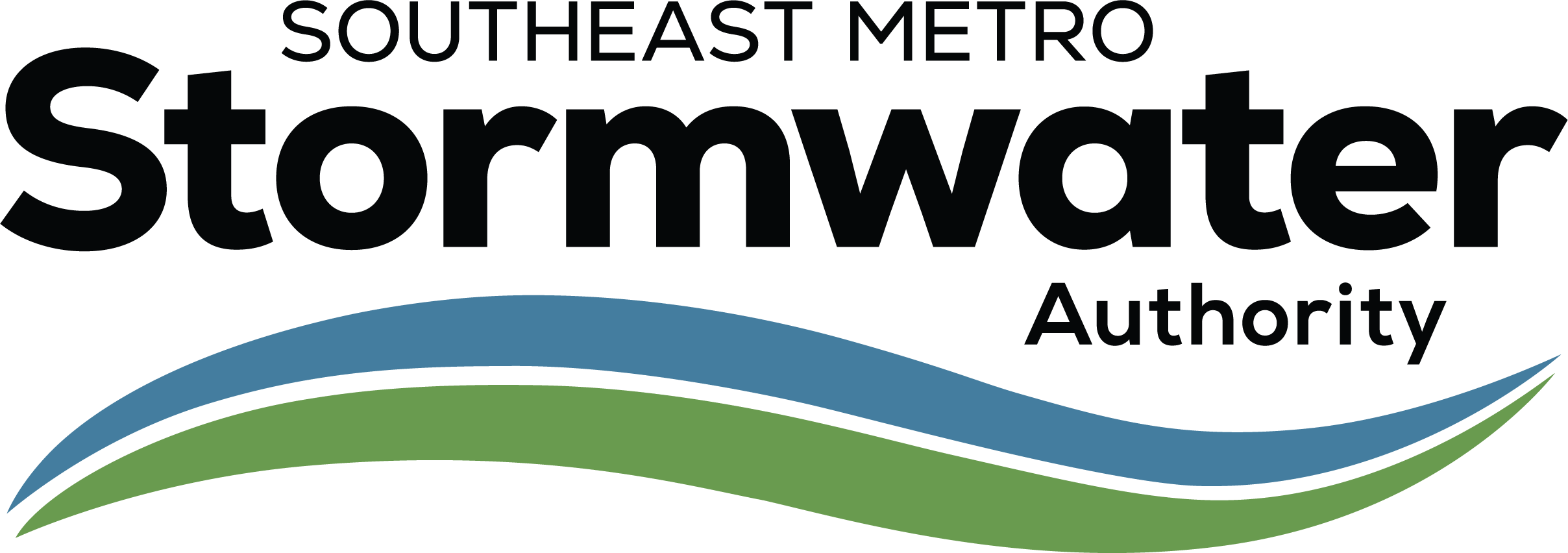Takin’ it to the streets!
It may surprise you to hear that streets are fundamental to managing stormwater. But “City Right-of-Way” or ROWs are the initial channel for storm drainage after rain. Streets are designed for rain or snowmelt to flow to the gutters which lead to storm drains, which lead to your neighborhood creek or stream (NOT to water treatment facilities). That means whatever bad stuff you wash off your driveway or sweep into the street ends up polluting fresh water sources, negatively affecting vegetation and wildlife.
SEMSWA depends on our residential partners (that’s YOU!) to help keep those ROW flows as clean as possible.
Here are 5 easy ways you can protect and improve stormwater quality in your neighborhood:
1. Think Before Dumping
- Paint, stain, or carpet cleaning water should never be dumped down a sink drain or outside near a gutter flow line. If you’re using contractors, ask them how they intend to clean up, what types of materials they’re using, and what they are able to recycle. For your own projects, latex paint is water-based and after completely dried, can be disposed in the trash. But oil-based paint or stain must be recycled (check out www.paintcare.org for sites).
2. Keep It Out Of The Gutter
- Excess lawn fertilizer does NOT make drainageways greener. Quite the opposite; lawn fertilizers and grass clippings treated with fertilizer add dangerous levels of phosphorus and nitrogen to water, which promotes algae growth, clouds the water, depletes oxygen levels for fish, and removes a fresh water source for countless other critters. Sweep fertilizer back into your lawn and keep it away from the gutters.
3. Avoid Driveway Care Care
- Driveway car washes or oil changes can save money, but the real cost is to water quality. Harmful detergents, tire residue and oil rinsed off your car and down the street end up in your neighborhood creek. Oil or antifreeze spills flow right into greenway wildlife habitat. If you do wash your car at home, divert the water to your grass which can help filter out pollutants. Spills of car fluids should be treated with an absorbent like sawdust and then swept up for disposal. Never hose off or power wash into the street.
4. Keep New Landscaping Material On Your Property
- It seems convenient to have new mulch or soil delivered to the street in front of your home. Afterall, it will only be there a few days or hours while you’re landscaping. But anything that touches the ROW gutter flow line will eventually end up in the drainageway and then your local creek especially after that surprise rainstorm. Always have landscaping material delivered on your property (it’s a City violation to place them on the street), plan your project for dry weather, get it done in one weekend and sweep up rather than hose off.
5. Keep Automobiles Mobile
- Cars that are parked for extended periods of time can and will leak fluids that make their way to the storm drain. If you have a car you don’t drive often and keep it outside, fix leaks or use a drip pan underneath. Don’t drip and drive!
A good rule of thumb: Nothing in the storm drain but stormwater! Together, we can protect and enjoy our beautiful waterways!
